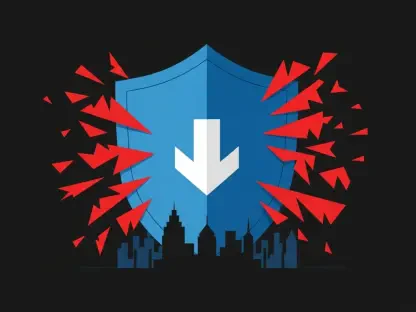Louisiana has long grappled with skyrocketing auto insurance rates, posing a significant financial burden on residents. In an unprecedented legislative effort, Governor Jeff Landry has endorsed a series of new laws targeting this pressing issue, aiming to bring financial relief to the state’s drivers. This comprehensive reform attempts to harmonize several factors contributing to high premiums, including legal and insurance industry practices, with the hope of creating a more balanced system. These legislative moves incorporate tort reform measures advocated by the insurance sector in a bid to tackle one of the state’s persistent challenges.
Legal Reforms and Regulatory Oversight
Expanding the Insurance Commissioner’s Authority
One of the pivotal pieces of legislation in this suite of new laws is House Bill 148, which importantly expands the powers vested in the insurance commissioner. This particular law empowers the commissioner to reject rate filings deemed excessive, underscoring the insurance department’s duty to protect consumers. The legislation acts as a regulatory mechanism to ensure fairness and transparency in rate setting, aiming to lighten the load on policyholders by keeping premium hikes in check. By tightening regulatory control, this law seeks to align insurance practices with consumer interests more closely.
Senator Kirk Talbot has raised concerns about Louisiana’s high incidence of injury-related car accidents, which he believes contributes significantly to elevated insurance premiums. With the state’s accident rate unusually high relative to its population, House Bill 148 enters the fray as a tool to counterbalance these trends by containing premium increases. Parallel to Talbot’s insights, the expanded regulatory oversight hopes to incentivize insurers to adopt prudent pricing strategies and collaborate with regulators to find a path that benefits all stakeholders. The law aims to prevent unjustified premium hikes, providing a safeguard for consumers.
Limiting Awards for Uninsured Drivers
Another significant legislative initiative is the restriction placed on uninsured drivers’ ability to claim substantial medical damages after accidents. The proponents of this regulation argue that it curtails disproportionately high legal awards often resulting from lawsuits, which in turn drive up insurance costs for everyone. By focusing on the equity of distribution in damages and legal settlements, this measure attempts to address a key loophole in the system that some feel contributes to the financial strain on insured motorists. This corrective action hints at creating a more just landscape in insurance litigation and settlement claims.
Governor Landry has justified these measures as crucial to realigning the legal landscape where uninsured drivers, often seen exploiting the system, previously benefited from outsized rewards in personal injury lawsuits. The restrictiveness imposed on claiming damages reflects an effort to ensure that the legal framework supports ethical and responsible behavior on the road. However, this aspect of reform has met mixed reactions from lawmakers, with some arguing it disproportionately affects one societal segment. Such divergent views demonstrate the complexity of balancing legislative changes with fairness and due rights.
Challenges and Skepticism
Diverse Legislative Opinions and Their Impact
Despite the new laws’ intentions, the expected impact on insurance rates remains under scrutiny. Governor Landry has cited industry analyses predicting modest savings as a result of these reforms, yet legislative leaders like Senate President Cameron Henry remain cautious. They emphasize that the lack of strict legal provisions mandating direct rate reductions leaves room for uncertainty. The absence of binding rate cut guarantees has sparked a broader debate on whether these legislative efforts will translate into tangible economic benefits for consumers or if insurance companies will circumvent these reforms.
Additionally, ongoing discussions about constraining lawyer advertising continue to test the boundaries of legislative action, with previous attempts deemed an impingement on free speech. This unresolved issue illustrates the intricacies involved in crafting an all-encompassing reform strategy. Meanwhile, Senator Royce Duplessis has voiced his apprehension, supporting only House Bill 148, citing potential efficacy in regulatory oversight. His reservations reflect a cautious optimism towards the reform package, highlighting the unpredictable nexus between newly-signed laws and their practical applications.
Future Trajectories for Legislative Efforts
The legislative session, constrained by law to conclude in June, initiated a flurry of debates about the efficacy of the proposed reforms. Lawmakers discussed incorporating mandated discounts within the legislative framework, an idea that garnered attention but ultimately lacked sufficient consensus. As the session reached its statutory adjournment, pundits speculated about the future trajectory of these reforms. The legal intricacies and diverse opinions point to an ongoing evaluation of Louisiana’s approach to curbing high insurance rates through structured policy interventions.
The legislation marks a complex interplay of factors requiring ongoing assessment to measure its success. As the situation evolves, policymakers and stakeholders must monitor the implementation and realize necessary adaptations to ensure the intended positive outcomes materialize for Louisiana’s motorists. By examining these legislative actions’ immediate impacts, they can refine approaches and respond dynamically to the state’s ever-changing auto insurance landscape.
A Path Forward for Louisiana’s Motorists
Louisiana has been dealing with extremely high auto insurance rates for a long time, causing a heavy financial strain on its residents. In a groundbreaking legislative action, Governor Jeff Landry has backed a new set of laws designed to address this urgent problem, aiming to provide financial respite to drivers throughout the state. This extensive reform initiative is designed to align several elements that contribute to steep premiums, including the practices seen in the legal and insurance sectors, with the hope of establishing a more equitable system. Among these legislative efforts are tort reform measures promoted by the insurance industry to tackle this ongoing challenge. The governor and legislators realized that without reform, the cost barrier would remain a severe economic issue for residents. The reforms are not only intended to lower insurance costs but also to create a fairer regulatory environment, ensuring that drivers are not charged exorbitantly due to outdated or unfair industry and legal practices.









